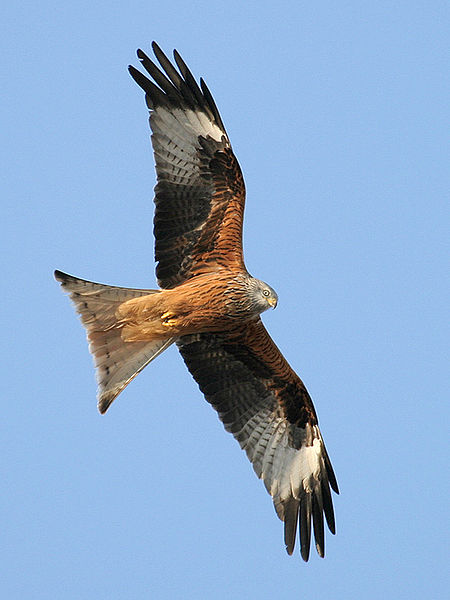
There were two copies of The Oldie in Avery Towers over Christmas and everyone who glanced at either of them noticed that ‘That man Ingrams is moaning about Red Kites again’.
Richard Ingrams has form on this subject but this time he seems to be blaming the decline of the Kestrel on Red Kites. Actually this throw-away remark (which should be thrown away by anyone with a brain) is in Ingrams’s TV review in which he has a go at the saintly and wise Chris Packham.
Whenever Ingrams is lost for words he seems to reach for the Red Kite to fill a bit of blank space in his writing. I sympathise with this – the Red Kite is inspirational! I tend to do the same – if I am lost for a subject to write about then I reach for the Red Kite because its return to the skies of Scotland, England and Ireland is possibly the best conservation success story of my lifetime.
I saw a Red Kite on my walk yesterday at Stanwick Lakes – although it was a dull day the sight of this beautiful bird brightened the day. What a good start to the year.
[registration_form]
Well said! Nice to have a success story to celebrate.
Sorry no idea what happened there,hope you delete first comment.
Yes a brilliant success story,unfortunately still a rare bird in Dorset.
Red Kite is such a beautiful bird, that I sometimes wonder how I stayed a birdwatcher for so long yet saw so very very few until ten years ago. I did at that time think that one would get blase about them and stop to look at each one—- i was wrong I still stop and enjoy each and every one. This is of course in complete contrast to the Ingrams of this world who are not only peddling ancient pointless prejudice, which deminishes them, but fail to see that beauty.
I saw a red kite over the A1 near Wittering on the day after boxing day. In the slow moving traffic it was possible to glance at it a couple of times and see the clever adjustments it was making as it flew into the wind. A stunning site in bright sunshine, it seemed to be looking at the motorists with a mixture of amusement and disdain. Perhaps Richard Ingrams was stuck in the same traffic jam as me…
I can’t wait until seeing a red kite is as frequent an occurrence as seeing a buzzard. They are very occasional visitors to my part of Sussex and I’ve never seen them on my local patch but more frequently seen in West Sussex and Hampshire. You can’t beat the sight of a bird of prey, large or small.
Can’t believe Richard Ingrams is so ignorant on this. Just goes to show sweeping statements people make with little or no knowledge of the subject.
To come back to this, my 1988 edition of the RSPB Book of British Birds has the red kite as still breeding only in central Wales and “rare elsewhere”. By contrast it says that “happily a hen harrier quartering rolling moorland is no longer an unusual sight…at a time when other raptors were declining it was actually recolonising northern Britain and Ireland”. How times change!
I mention this because of the fear I have that red kites will be the next target for the haters after harriers, buzzards and cormorants – precisely because they are such a wonderful (and all too rare) conservation success story. So I think any such attack on any raptor in print, no matter how preposterous, is to be taken seriously. Expect murmurings about how there are “too many” in the chilterns and calling into question reintroduction projects – I think Mark has already alluded to this – and that’ll be just the start. Who knows, when Mr Paterson emerges from his next Cobra meeting he may even feel that his goldfinches are threatened!
To return to the Ingrams – quite how a few thousand red kites could be implicated in the decline of such a widespread species as the kestrel is beyond me – competition for food? nest predation?! Shurely shome mishtake?
I wonder if growth of young to middle aged trees along motorway and dual carraigeway verges may have reduced feeding opportunities for kestrels? Along the A421 between the A1 and Milton Keynes, dualled only a few years ago and so with verges still open, I see them often – not so on more ‘mature’ verges. Pure unscientific anecdote/speculation of course. Much young tree growth along roads and railway lines is ash, so if there was anything in this maybe some of those feeding opportunities will start to open up again…